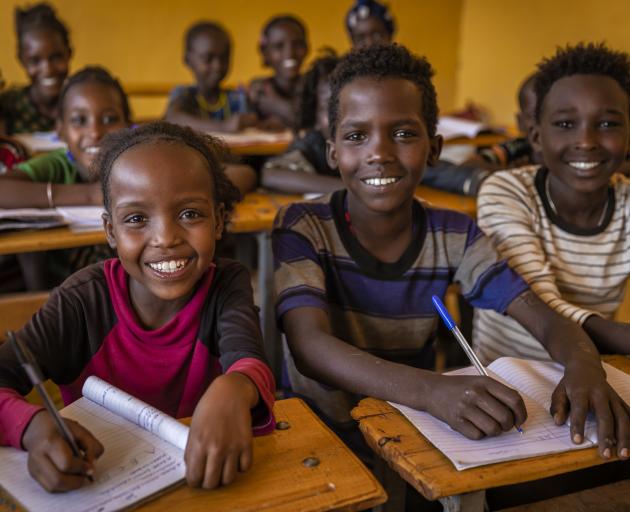
Every year on May 25 we celebrate Africa Day, the day in 1963 that the continent-wide Organisation of African Unity was formed.
Turned into the African Union in 2002, it is a regional multilateral agency looking after the collective interests of 55 African member states.
Despite successes such as the introduction of a continent-wide free trade agreement in 2021, the continent faces challenges that deserve our attention, and support where possible.
The theme of this year’s Africa Day is education, and quite rightly it is regarded as one of the biggest challenges facing the continent, given its rapid population growth.
The UN predicts a total of 2.5billion Africans will make up 25% of the world population in 2050, up from 9% in 1900.
By 2100, 40% of all humans will be African.
This contrasts with shrinking populations in East Asia where Japan will shrink by 18% by 2050, China by 10% and South Korea and Taiwan similarly.
Africa’s population growth makes up for half of the current increase in world population, adding about the size of the French population every two years.
Currently, 40% of Africans are younger than 15 but the median age is expected to increase, delivering what is called a demographic dividend.
This occurs when people aged 15-64 (this is the working population) begin to outnumber dependents — people who fall outside that age group.
To benefit from this dividend, productivity has to be lifted, which in turn depends on education.
Not noticed widely enough, African governments on average have managed to increase primary-school completion rates from 52% in 2000 to 69% in 2022, and 35-50% in lower secondary education.
Yet, much remains to be done, with 29 % of children still out of school and quality suffering due to lack of quality teachers and suitable facilities.
Growing populations demand more public spending on health and education.
Meantime, the huge challenge of adapting infrastructure to deal with the effects of climate change, which will hit Africa particularly hard, is looming.
Herein lies a challenge for us in the privileged countries of the world: helping Africans to improve access to schools and education opportunities will lift global productivity given the size of the portion of the global population that is at stake.
This includes providing more opportunities for Africans to come and study in New Zealand, but also targeting our official assistance to enhance education outcomes in recipient African states.
As an economist once said: "The best that any country can do to stimulate development is to make sure that all the girls go to school and stay there."
Yes, promotion of development is the task of the local national government primarily, and not of external donors.
But before we write off our responsibilities, let’s recall the major problems poor countries experience to simply keep up with servicing their debt.
Low interest rates after the global financial crisis of 2008-9 encouraged developing countries to increase their public debt, which was often held by private rather than public creditors.
When inevitable public spending and interest rates shot up during and after the global shock that was Covid, debt-servicing became a huge burden for poor nations.
Global debt by governments, businesses and households is already three times as large as world GDP, and growing.
It is expected up to 100 countries will have to curtail public spending just to service their debt, including the poorest of the poor.
Africa’s debt in 2022 alone was the size of global GDP that year and has more than doubled since 2010, outstripping its growth in US dollar terms by a factor of more than four.
Many can add no new spending to health and education budgets, and countries such as Zambia, Ghana, Ethiopia and Kenya are in serious debt distress and have to cut already meagre public spending.
Over the next 12 months the world has two opportunities to negotiate a new global compact and address the debilitating debt crisis.
In September, the United Nations will preside over the UN Summit of the Future and in June 2025 the Fourth International Conference on Financing for Development takes place.
Debt restructuring, coupled with debt forgiveness, is not only in the interest of debtor nations, but creditors also stand to gain from securing the finances required to meet the 2030 Sustainable Development Goals.
OECD countries, including New Zealand, have a major role to play in highlighting the need for thorough debt reform, and securing that it is done in an equitable manner.
Leadership will have to come from small and middle-power states such as Australia, New Zealand, France, Germany, and Canada.
The big ones — the US and China — are caught up in beggar-thy-neighbour nationalistic projects, from which little good will come.
- Prof Philip Nel is head of programme in the School of Politics at the University of Otago.











